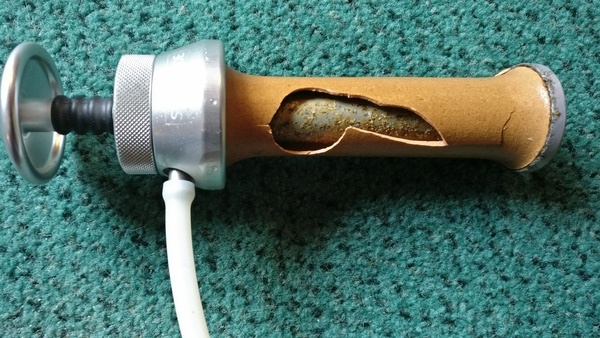I purchased a Katadyn Pocket filter in 2012 for a variety of reasons, the principal amongst which was to have drinking water at my cottage during the off season (winter) when the water system is turned off to protect it from freezing. Issues such as not wanting to depend on neighbours and even just whether or not the neighbours were there, the relative convenience of having as much water as I was willing to filter when I wanted regardless of the hour, and not having to transport very large quantities of water from the city, circled through my head.
Like so many other people, I repeated in my blog the 50,000 litre nominal capacity of the filter cartridge as a deciding factor in the purchase of this particular filter. Despite having accepted the value as a ballpark figure to mean “you’ll get lots and lots and lots of water, a few orders of magnitude more than other filters”, I also recognized the ballpark nature of the figure, and that actual capacity would vary (possibly considerably) according to real world conditions such as varying water quality and just how vigorously one might clean the filter cartridge. Unfortunately, I have been disappointed with just how variable this figure has actually proven to be in my case.
In 2016, I began wondering about the real life capacity of the filter cartridge, given a noticeable change in pumping experience filtering water from my artesian well instead of melted snow from my front yard at the cottage. The obvious visual wear of the filter gave me a reference point, and, having kept notes, I revealed that since purchase and up to that point, I’d only filtered roughly 1,500 litres. I had estimated that I might attain a very rough total capacity of 3,000 litres.
In 2017, I had passed a benchmark: The plastic gauge that had come with the unit had passed over the filter, at about 1,650 litres, and by the time I’d written the post, I’d reached 1,750 litres. This represented 3.5% of the nominal 50,000 litre capacity. I mused over the lack of any reported real life capacities that I could find on the internet, going through some hypothetical arithmetic I was able to develop from one source.
I knew that I wouldn’t get anywhere near the oft-touted 50,000 litres. In anticipation of needing a replacement filter cartridge, I went to a store selling them, hesitantly because the replacement part has a fairly expensive price. I purchased a replacement, and was pleasantly surprised to get a 73.2% discount on the price at the counter (for reasons unknown). I surmised that a part of the discount was since the unit was in a box that had obviously been opened and resealed, although why it was so significant still eludes me. The only thing in my favour were the local consumer protection regulations requiring that in the case of a difference between the advertised price and the price at the counter, the consumer gets either up to a $10 discount from the advertised price if lower than the value at the register, or the value of the register price if lower than the correct price.
Since January, 2017, when the gauge passed over the filter unit, I have been bringing somewhat more water up to the cottage, up to five gallons at a time instead of just a single gallon, in order to somewhat extend the life of the filter cartridge. I have been continuing to use the original filter unit, wanting to take full advantage of its lifespan.
During my most recent weekend to the cottage in April, 2019, I began filtering water as usual. The filter had been cleaned and bleached prior to use. However, the filter quickly clogged, and suddenly, the plunger went down quickly; the unit’s internal pressure had been sufficient to collapse that which remained of the filter.

It should be noted that the filter failure was due to the fact that over time and hundreds of filter cleanings, it had been physically worn away, and therefore the failure was due to it being thin (about 1mm to 2mm thick) and not because I’m inventing a frivolous claim of manufacturing defect.
I also have a definitive capacity of the cartridge I received with the original purchase, under the various conditions of water quality I filter and maintenance: approximately 2197.5 litres (let’s round that up to 2,200 litres), or 4.4% of the stated 50,000 litre capacity. It was used up over seven off seasons at the cottage, providing a significant amount of the drinking quality water needed for cooking, cleaning, and drinking.
It seems that I didn’t get anywhere near the nominal capacity. Sigh.
Now it’s time to see how much capacity I get out of the second filter.
